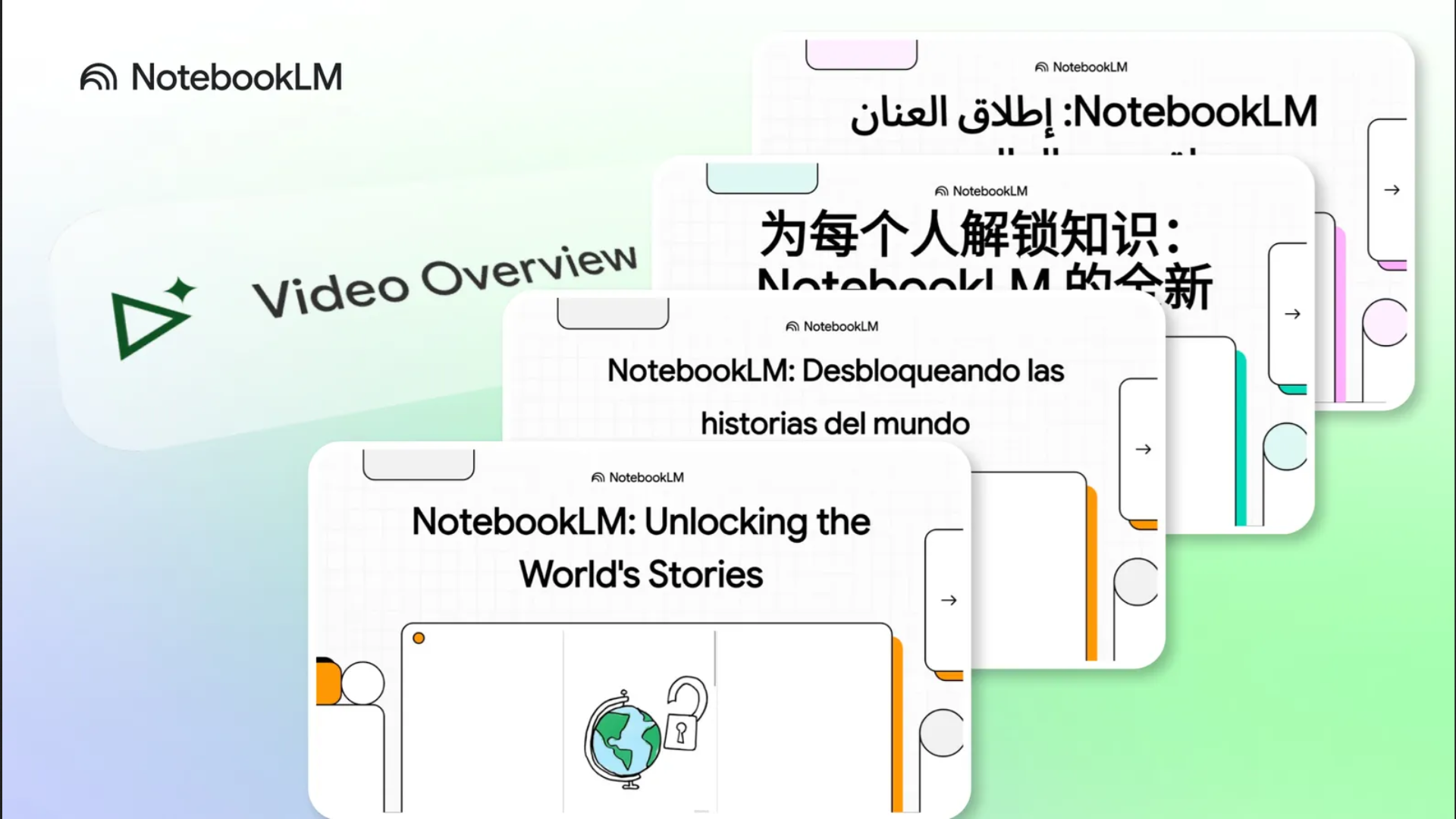Google NotebookLM Expands Multimedia Summarization with Russian Video Support and 80+ Languages

Google’s NotebookLM Expands Multimedia Summarization with Russian Video Support and 80+ Languages
Google has enhanced its AI-powered research assistant by introducing the capability to generate multimedia summaries in Russian, alongside support for over 80 additional languages. This update marks a significant expansion in accessibility, allowing users worldwide to convert diverse content—from text documents to audio clips and online videos—into concise video presentations.
At the core of this service is an AI engine designed to synthesize and visualize information from various user-submitted sources. It seamlessly integrates textual notes, audio recordings, and streaming content such as YouTube videos, and transforms them into narrated video overviews. These overviews include dynamically created slides enriched with images, charts, quotes, and key data points extracted directly from the original materials, facilitating clearer understanding of complex subjects.
Previously limited primarily to English-language support, the platform now embraces a multilingual approach that addresses the needs of a global user base. The addition of Russian language video summaries reflects a broader effort to make AI-generated educational tools universally accessible, enhancing comprehension through tailored audiovisual content.
Multimodal Content Integration and Customization
The system's strength lies in its ability to process and combine different types of media inputs into a single cohesive overview. Users can upload documents, share audio segments, or provide video URLs, which are all ingested by the AI to produce an informative narrative paired with supportive visual aids. This mode of summarization is especially effective for content involving statistical analysis, procedural explanations, or abstract concepts that benefit from visual reinforcement.
Customization features allow individuals to direct the AI’s focus according to their expertise or learning objectives. Whether users require a general introduction suitable for beginners or a deeper dive aimed at specialists in a particular field, the generated video summaries can be tailored accordingly. This adaptability enhances both educational and professional research workflows.
Such flexibility in summary generation ensures that the outputs are not merely generic recaps but targeted tools that address the user’s unique informational context and audience expectations.
Service Accessibility and User Experience Enhancements
These video summaries are made available through a web-based interface that encourages easy access and experimentation. Users can try the functionality without charge, enabling widespread adoption and feedback gathering. To support learning and effective utilization of the platform, tutorials and comprehensive guides highlight best practices and feature insights.
Further improvements encompass the platform’s "Studio" panel, which consolidates multimedia output creation into a streamlined user experience. Users can simultaneously explore multiple formats such as audio summaries, mind maps, and reports, alongside the new video presentations. This multitasking capability optimizes productivity by allowing parallel engagement with different learning aids.
Importantly, content sharing is carefully governed to ensure data privacy and security, permitting access only to authorized collaborators within an organization. This fosters collaborative research and learning while maintaining control over sensitive information.
Implications for Global Learning and Research
By supporting a wide linguistic range, the platform empowers researchers, students, and educators across cultures to engage with complex information in their native or preferred languages. The Russian language integration, alongside other languages, addresses a vital need for localized educational technology that respects linguistic diversity.
Moreover, the use of AI-generated video summaries transforms traditional learning paradigms by combining auditory and visual learning styles. This approach enhances retention and comprehension, particularly for intricate or data-heavy subjects.
The technological advancements manifested in this platform represent a convergence of natural language processing, computer vision, and multimedia generation—pioneering tools that bridge knowledge gaps efficiently. As AI continues to evolve, such integrative frameworks will likely become foundational elements in digital information management and education.
Overall, this development marks a substantial stride in making advanced AI-driven research support widely accessible, customizable, and effective across a broad spectrum of languages and media formats.
